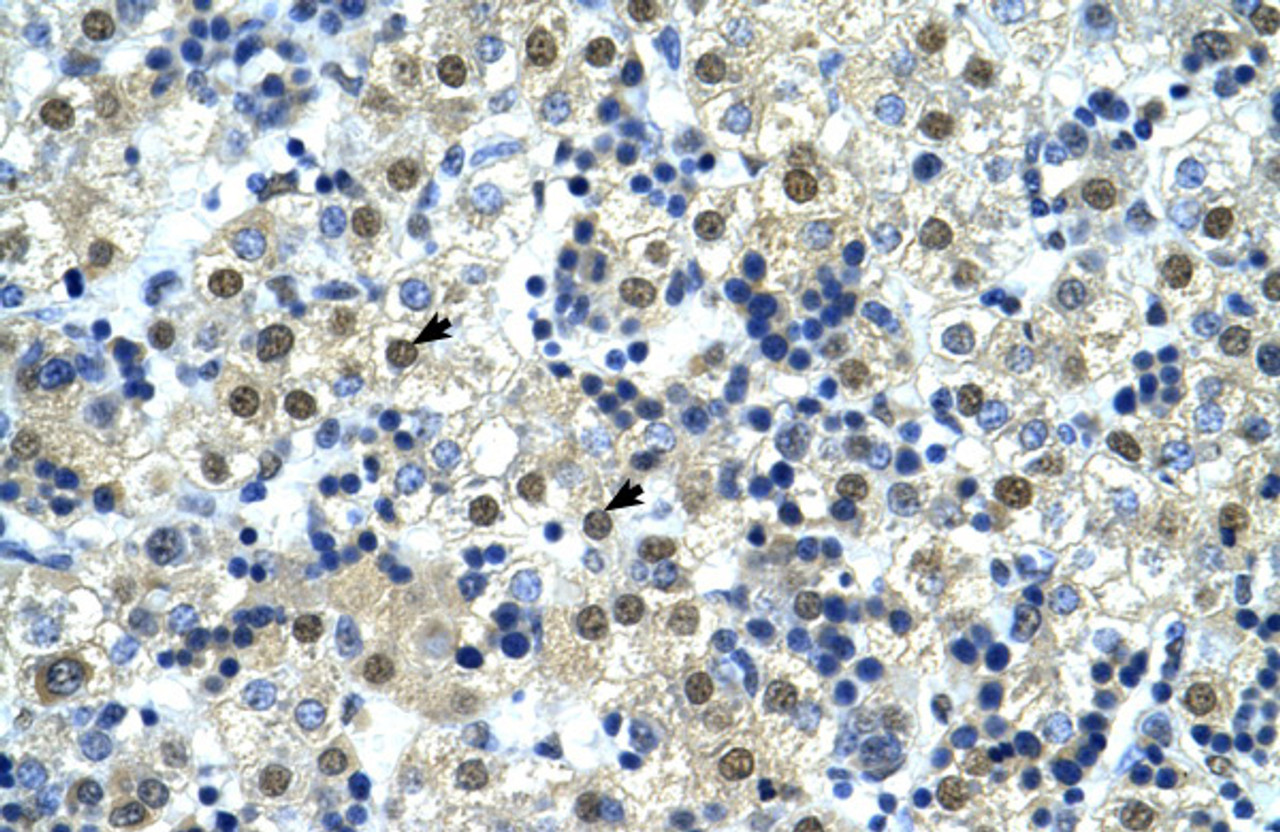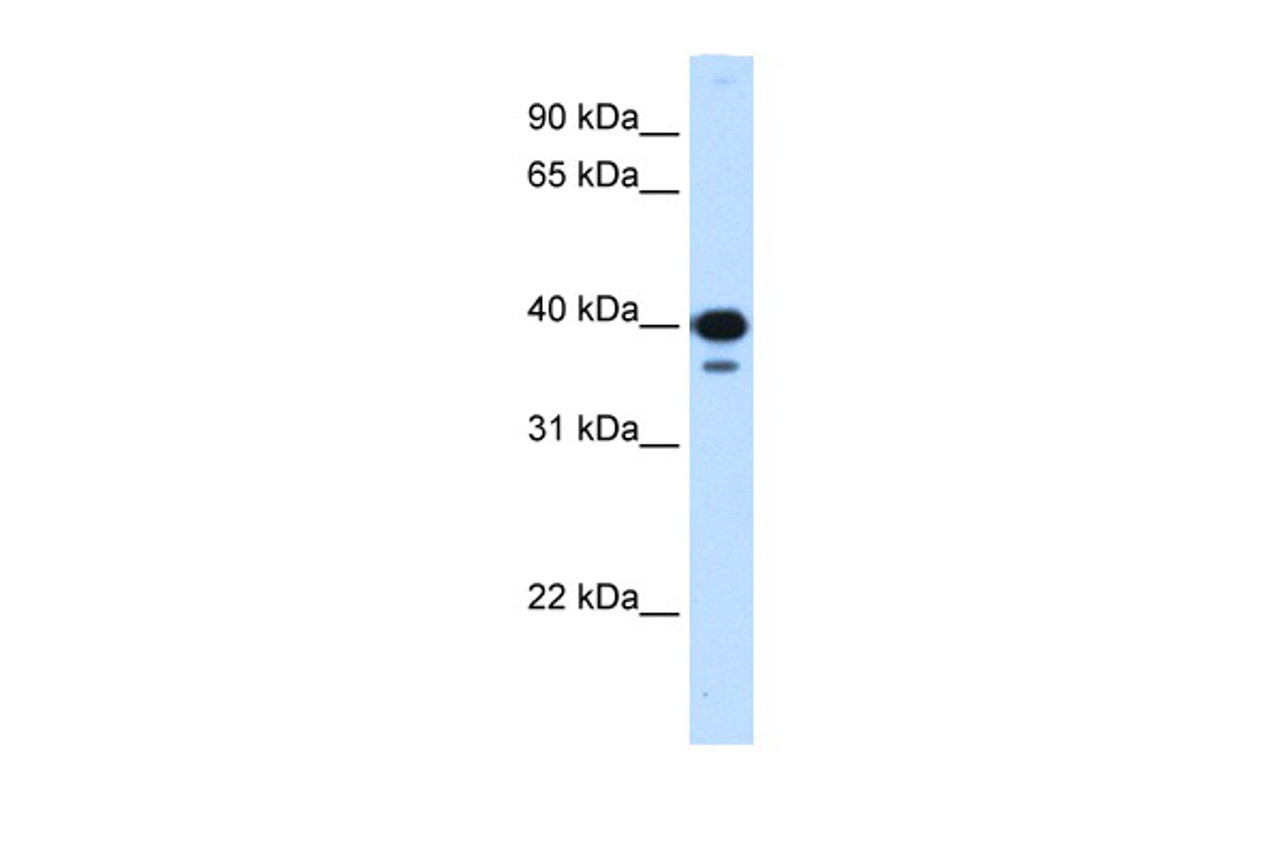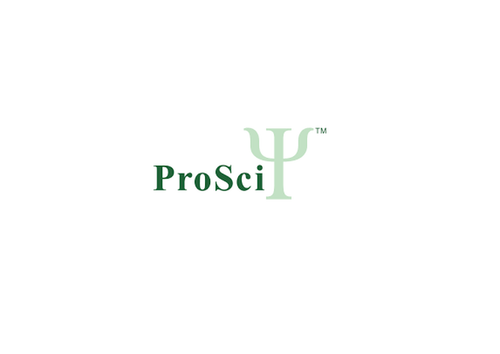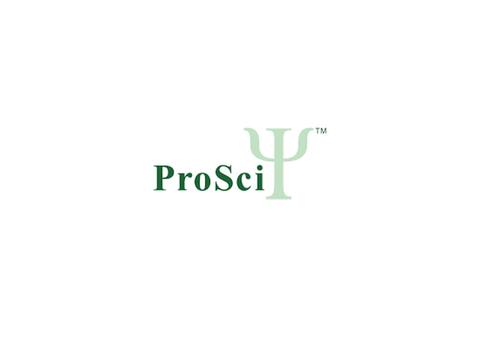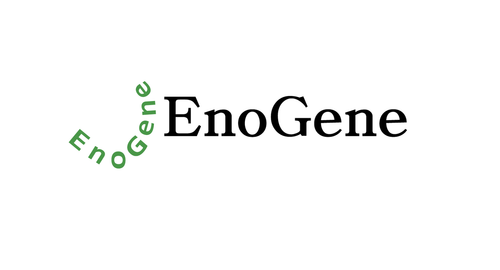Product Description
NFYC Antibody | 29-001 | ProSci
Host: Rabbit
Reactivity: Human, Mouse, Rat, Dog
Homology: N/A
Immunogen: Antibody produced in rabbits immunized with a synthetic peptide corresponding a region of human NFYC.
Research Area: Transcription
Tested Application: E, WB, IHC
Application: NFYC antibody can be used for detection of NFYC by ELISA at 1:62500. NFYC antibody can be used for detection of NFYC by western blot at 0.25 μg/mL, and HRP conjugated secondary antibody should be diluted 1:50, 000 - 100, 000.
Specificiy: N/A
Positive Control 1: Tranfected 293T Cell Lysate
Positive Control 2: N/A
Positive Control 3: N/A
Positive Control 4: N/A
Positive Control 5: N/A
Positive Control 6: N/A
Molecular Weight: 37 kDa
Validation: N/A
Isoform: N/A
Purification: Antibody is purified by peptide affinity chromatography method.
Clonality: Polyclonal
Clone: N/A
Isotype: N/A
Conjugate: Unconjugated
Physical State: Liquid
Buffer: Purified antibody supplied in 1x PBS buffer with 0.09% (w/v) sodium azide and 2% sucrose.
Concentration: batch dependent
Storage Condition: For short periods of storage (days) store at 4˚C. For longer periods of storage, store NFYC antibody at -20˚C. As with any antibody avoid repeat freeze-thaw cycles.
Alternate Name: NFYC, CBF-C, CBFC, DKFZp667G242, FLJ45775, H1TF2A, HAP5, HSM, NF-YC
User Note: Optimal dilutions for each application to be determined by the researcher.
BACKGROUND: NFYC is one subunit of a trimeric complex, forming a highly conserved transcription factor that binds with high specificity to CCAAT motifs in the promoter regions in a variety of genes. NFYC forms a tight dimer with the B subunit, a prerequisite for subunit A association. The resulting trimer binds to DNA with high specificity and affinity.The protein encoded by this gene is one subunit of a trimeric complex, forming a highly conserved transcription factor that binds with high specificity to CCAAT motifs in the promoter regions in a variety of genes. This gene product, subunit C, forms a tight dimer with the B subunit, a prerequisite for subunit A association. The resulting trimer binds to DNA with high specificity and affinity. Subunits B and C each contain a histone-like motif. Observation of the histone nature of these subunits is supported by two types of evidence; protein sequence alignments and experiments with mutants. Additional regulation, preliminarily supported by the EST database, may be represented by alternative splicing in this subunit.
 Euro
Euro
 USD
USD
 British Pound
British Pound
 NULL
NULL


